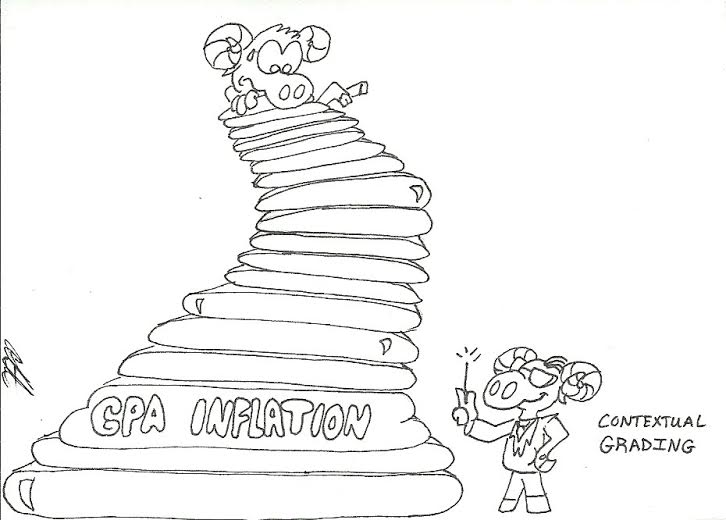Like price inflation, grade inflation in today’s colleges can be incredibly persistent. The trend of grade inflation started in the 1960s, abated in the ‘70s, then began to rise again in the ‘80s and continued on from there. In a recent study, Stuart Rojstaczer and Christopher Healy combined data of grades from students at 200 colleges and universities across the United States from 1940 to 2009. The data show that grade-point averages have risen from a pace of 0.1 to 0.15 per decade since the 1980s, and more than 40 percent of all grades were awarded in the A range. Private schools, including Harvard, have a faster rate of inflating grades than public colleges.
College administrators and professors have long been debating how to reverse this trend so that the grades can be awarded to those students who truly deserve them, but few of the suggestions work. In 2004, Princeton University adopted a guideline that, on average, no more than 35 percent of grades should be awarded in the A range. But this guideline has a lot of room for professors to manipulate it, and it was difficult to enforce the quota. Economist Tim Harford has proposed making grade inflation more than price inflation by uncapping the highest grade. The entire grade scale should be shifted upward over time. For example, today’s B becomes a B+ after five years, today’s A+ becomes an A++ in another five years. Under such a system, employers and graduate schools could deflate the grade in order to make comparisons. But this proposal is somewhat difficult to take uniform measure across all schools.
An effective solution might not be as complicated as one might imagine. UNC-Chapel Hill will take a bold step next fall, advancing its grading system by putting grade distribution of a class and a student’s rank in a class on transcripts. In an interview with WUNC, UNC-CH Sociology Professor Andrew Perrin explained, “Students who have faithfully worked in really difficult classes and gotten adequate grades, those students are going to look better. And students who have worked to find high-grading classes and not particularly worked hard in those classes… Those are going to look worse.”
UNC-CH is making a move in the right direction to tackle the grade-inflation problem by motivating students who are really interested in a subject and willing to put effort into it. With this new grading system, GPAs can truly reflect how a student looks in comparison to his or her peers. This new system will provide employers and graduate schools sufficient information to differentiate the outstanding students from those who are ‘free riders.’
Previous grading-system reform aimed at restricting professors’ power to give high grades. But professors have a tendency to shift their students’ grades up because they care about class enrollment and the pressures from the student market. If an instructor gives tough exams and has a strict way of grading, students would be less likely to enroll in his or her class, or not give him or her a decent evaluation at the end. Motivated by this, instructors, especially non-tenured instructors, like to give higher grades to students than they earned. When a school knows other schools are inflating GPAs, the best strategy is to inflate its own, in fear that its students might be disadvantaged in the marketplace because they have less impressive transcripts.
UNC-CH’s groundbreaking experiment may help to curb the grade inflation trend that has become widespread in most colleges across the nation. The main goal should be solving the internal part of the problem by changing students’ incentive in the process of enrollment instead of enforcing rigid grade quotas for professors. The change in students’ action toward enrollment might ultimately bring optimistic prospects for the way professors give grades with more fairness and less distortion.
Send your thoughts to Ziyi at technician-viewpoint@ncsu.edu.











